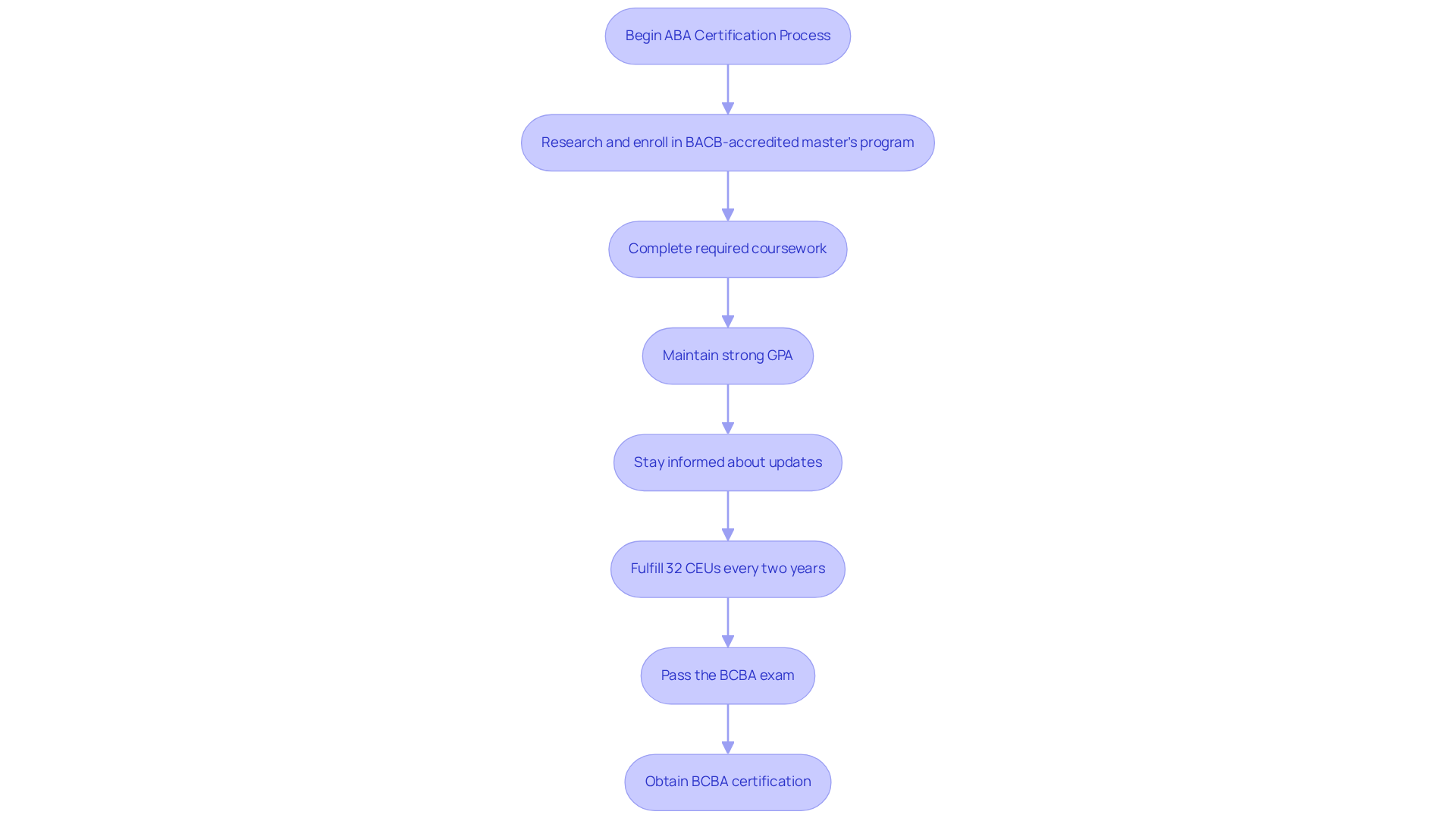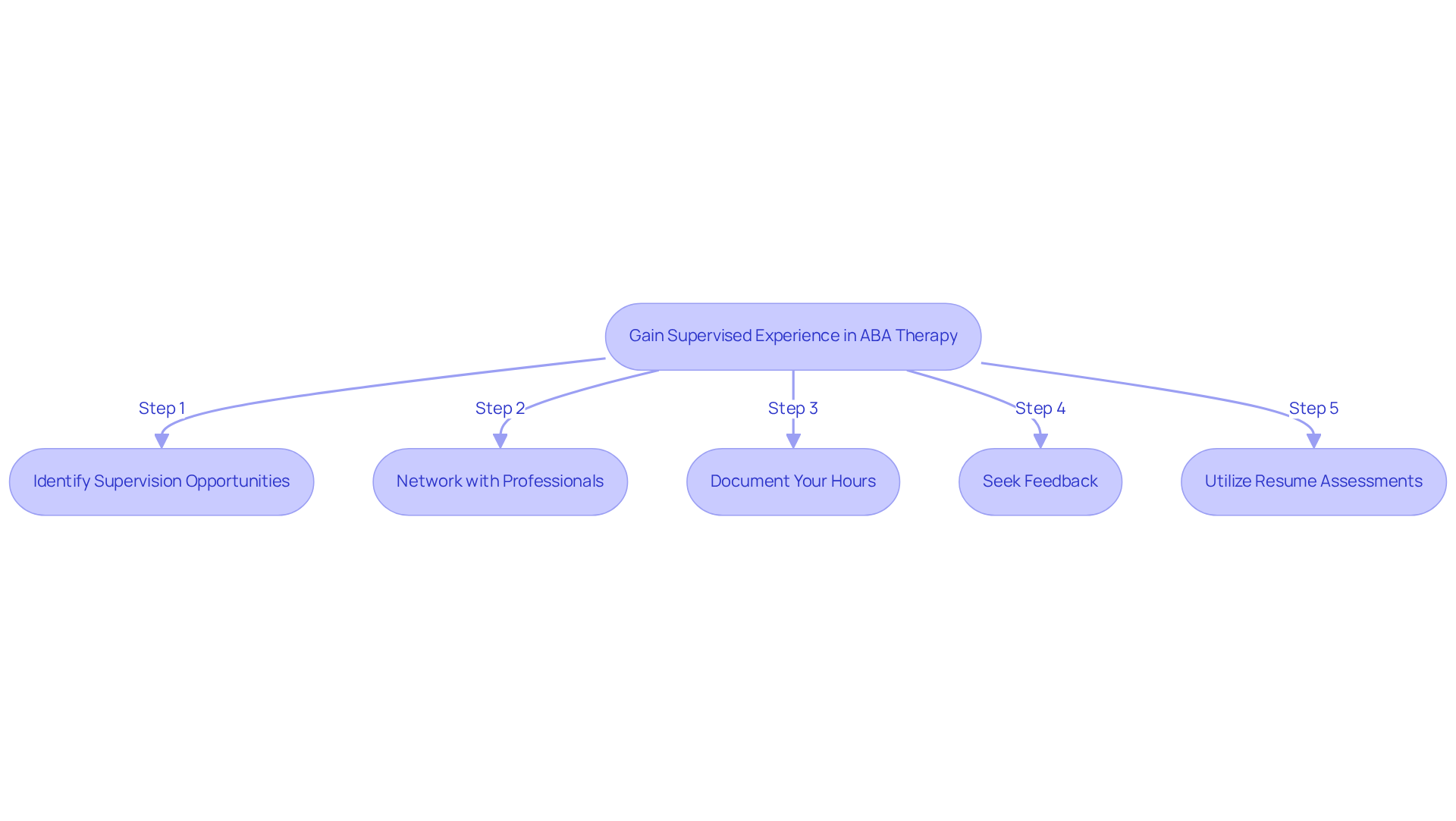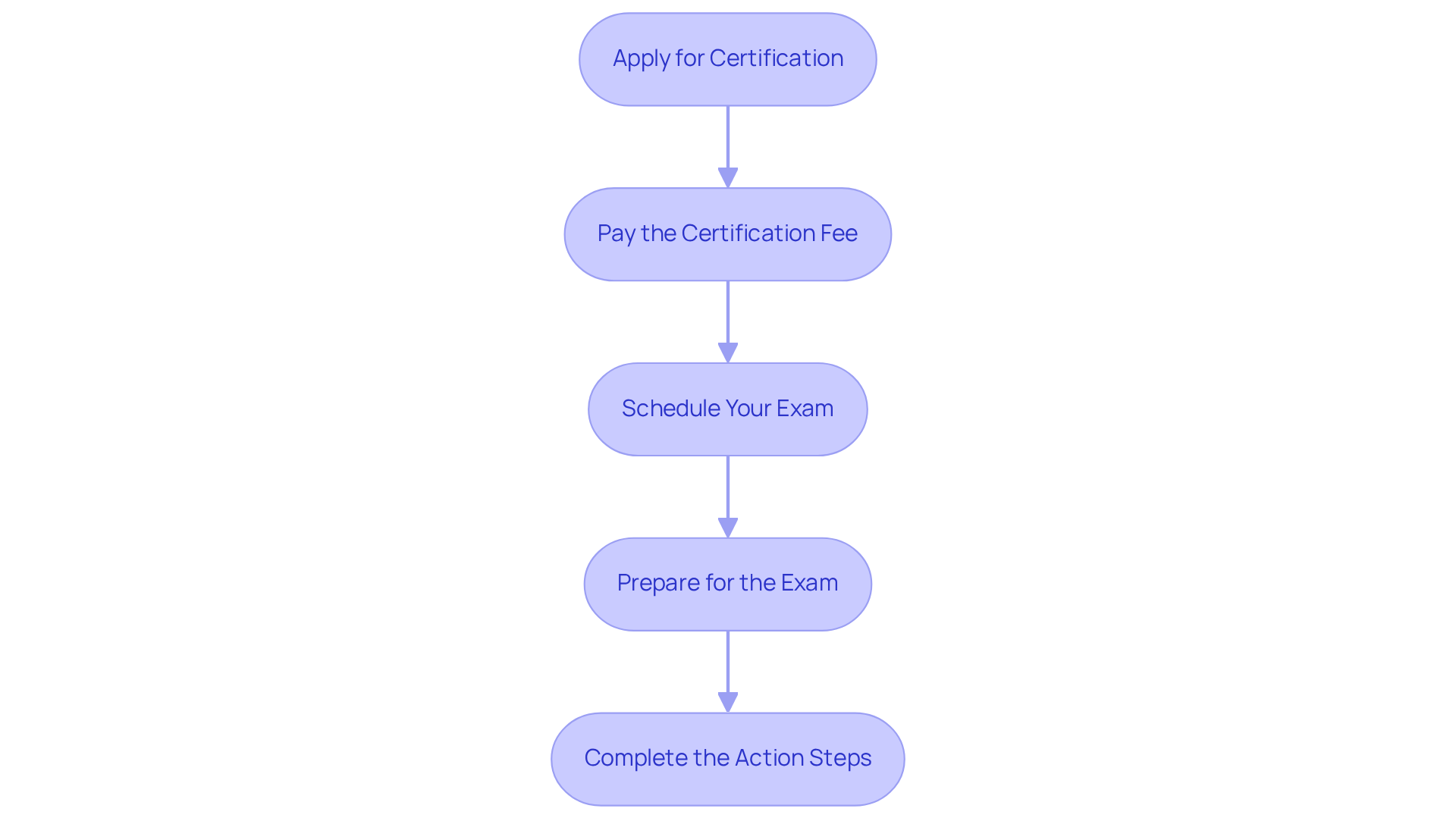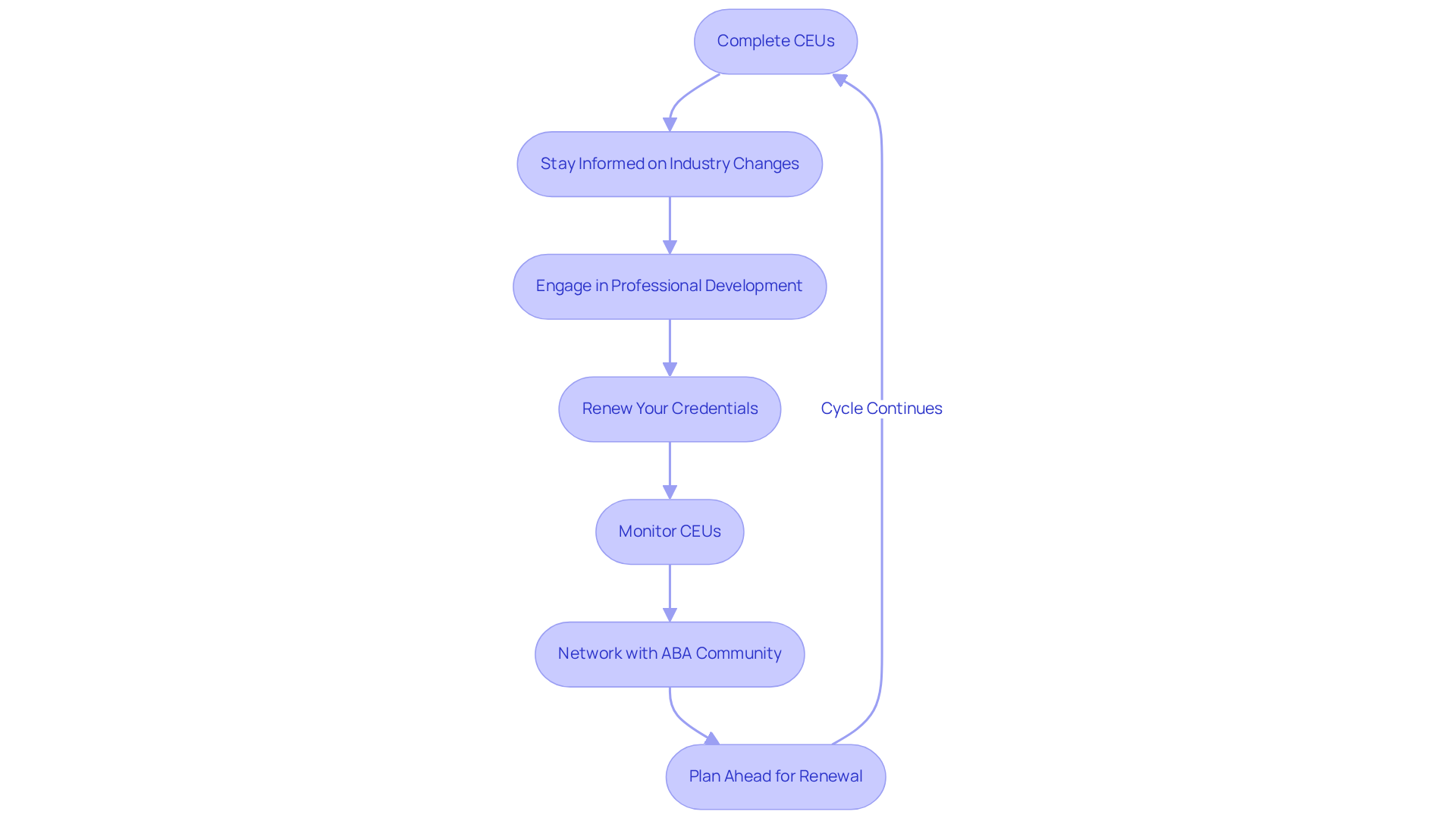June 27, 2025

To become ABA certified, candidates must complete a BACB-accredited master's program, accumulate supervised experience in ABA therapy, and successfully pass the certification exam. This pathway is not just a requirement; it is a commitment to excellence in the field of Applied Behavior Analysis. Meeting educational standards is crucial, as is gaining practical experience. Moreover, adhering to ongoing continuing education requirements is essential to maintain certification. This ensures that certified professionals remain at the forefront of best practices in ABA therapy, ultimately benefiting those they serve.
The field of behavior analysis is rapidly evolving, highlighted by a projected 25% increase in demand for Board Certified Behavior Analysts (BCBAs) by 2026. This surge presents a unique opportunity for aspiring professionals to embark on a fulfilling career that significantly impacts individuals' lives. However, the path to ABA certification can be complex, involving specific educational requirements, supervised experience, and ongoing professional development.
What essential steps must candidates navigate to secure their certification and thrive in this dynamic field?
Reflect on your current hiring challenges—how can Hire ABA address these issues effectively?
The demand for (BCBAs) is projected to rise by 25% by 2026, making this an opportune moment to embark on a rewarding career in behavior analysis. To obtain ABA recognition, candidates must meet the educational requirements set by the Behavior Analyst Certification Board (BACB). This typically involves obtaining a master's degree in behavior analysis, psychology, education, or a closely related area from a BACB-accredited institution, which is essential for eligibility to be certified. Essential coursework should encompass:
Many accredited programs also provide specialized tracks that focus on specific populations, such as children with autism, thereby enhancing both expertise and employability in the field. Alongside educational criteria, applicants must fulfill 32 continuing education units (CEUs) every two years to retain their BCBA credentials, including a minimum of 4 hours centered on ethics. The financial obligations for acquiring BCBA credentials consist of:
These are costs potential candidates should plan for.
To understand how to become ABA certified, consider these action steps:
As the demand for BCBAs continues to rise, candidates should remain informed about updates to educational pathways and prerequisites to ensure compliance with the latest BACB guidelines. Are you prepared to take the next step in your professional journey? The time to act is now.

After fulfilling your educational obligations, the next critical step in learning how to become ABA certified is to acquire supervised experience in ABA therapy. Candidates must complete between 1,500 and 2,000 hours of supervised fieldwork under the guidance of a qualified BCBA to learn how to become ABA certified, as required by the Behavior Analyst Certification Board (BACB). Here’s how to effectively navigate this process:
To further support your journey, consider utilizing personalized resume assessments offered by Hire ABA. By submitting your resume, our team will assess your experience and career goals, ensuring you are matched with the best roles in ABA therapy. We employ advanced job fit scoring to identify opportunities that align with your skills, preferences, and desired locations.
Action Steps:

Once you have fulfilled your educational and supervised experience requirements, you are ready to learn how to become aba certified. Navigating this step is crucial for your career advancement:
Action Steps:

Ongoing education and professional development are essential for those seeking to understand how to become ABA certified and to uphold their ABA credentials. Here’s how to ensure you remain certified:
Action Steps:

Embarking on the journey to become ABA certified is not just a step; it’s a leap into a fulfilling career in behavior analysis. The demand for Board Certified Behavior Analysts (BCBAs) is on the rise, making this an opportune time to pursue certification. Achieving this credential requires a strategic approach:
Each step is crucial, not only for obtaining the certification but also for ensuring long-term success in the field.
Key insights from this guide underscore the importance of:
Furthermore, staying informed about the latest BACB guidelines and fulfilling continuing education requirements are essential for maintaining certification. The structured steps outlined here provide a clear roadmap for aspiring BCBAs, making the process not only manageable but also achievable.
Ultimately, taking proactive steps towards ABA certification not only enhances your career prospects but also contributes to the broader community by providing essential support to individuals in need of behavior analysis services. The time to act is now—commit to your professional journey, engage with the ABA community, and ensure compliance with evolving standards to thrive in this rewarding field.
What is the projected demand for Board Certified Behavior Analysts (BCBAs)?
The demand for BCBAs is projected to rise by 25% by 2026.
What educational requirements must candidates meet to obtain ABA certification?
Candidates must obtain a master's degree in behavior analysis, psychology, education, or a closely related area from a BACB-accredited institution.
What essential coursework is required for ABA certification?
Essential coursework should include principles of behavior analysis, research methods in behavior analysis, ethics in behavior analysis, and assessment and intervention strategies.
Are there specialized tracks available in accredited programs?
Yes, many accredited programs offer specialized tracks that focus on specific populations, such as children with autism.
What are the continuing education requirements for maintaining BCBA credentials?
Applicants must fulfill 32 continuing education units (CEUs) every two years, including a minimum of 4 hours focused on ethics.
What are the financial obligations for acquiring BCBA credentials?
Candidates should plan for a $245 fee for submission and a $125 examination fee.
What steps should one take to become ABA certified?
Candidates should research and enroll in a BACB-accredited master's program, complete all required coursework, maintain a strong GPA, and stay informed about revised coursework and supervision guidelines effective January 1, 2026.
Why is it important to stay informed about updates to educational pathways?
It is important to ensure compliance with the latest BACB guidelines as the demand for BCBAs continues to rise.
Our expert recruitment strategies and AI-driven sourcing ensure that you receive top-notch candidates quickly, without compromising on quality. Whether you’re looking for BCBAs, Clinical Directors, or RBTs, we’ve got you covered.